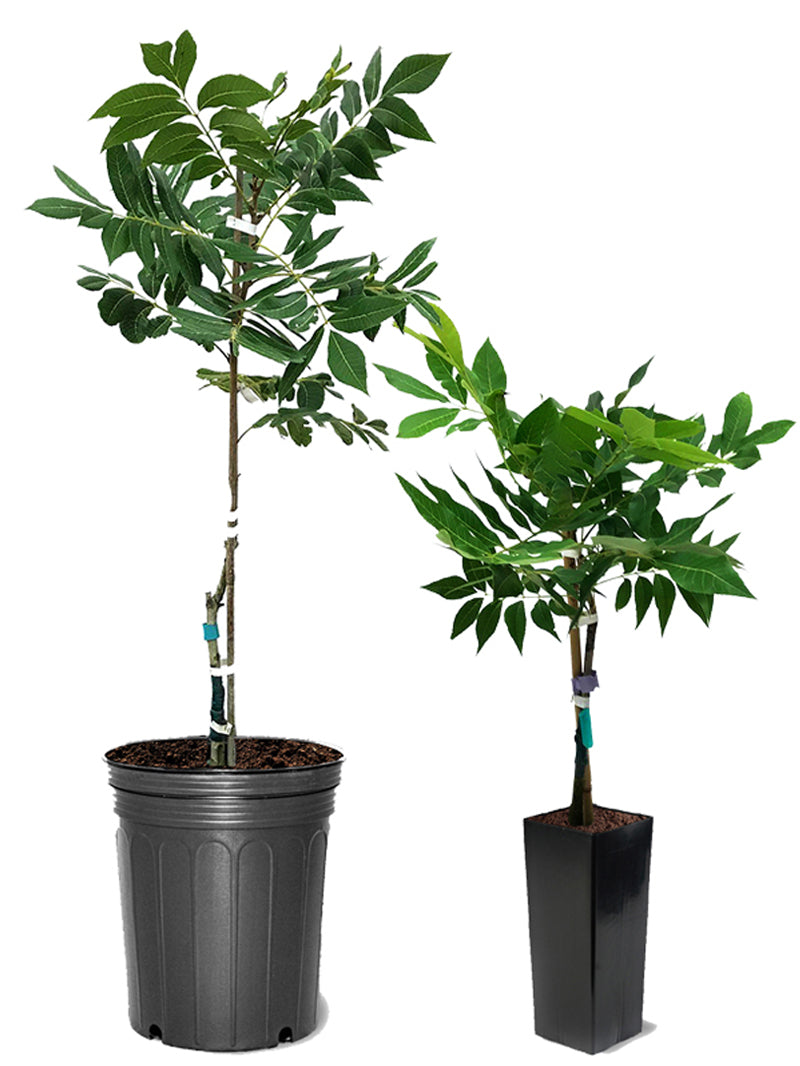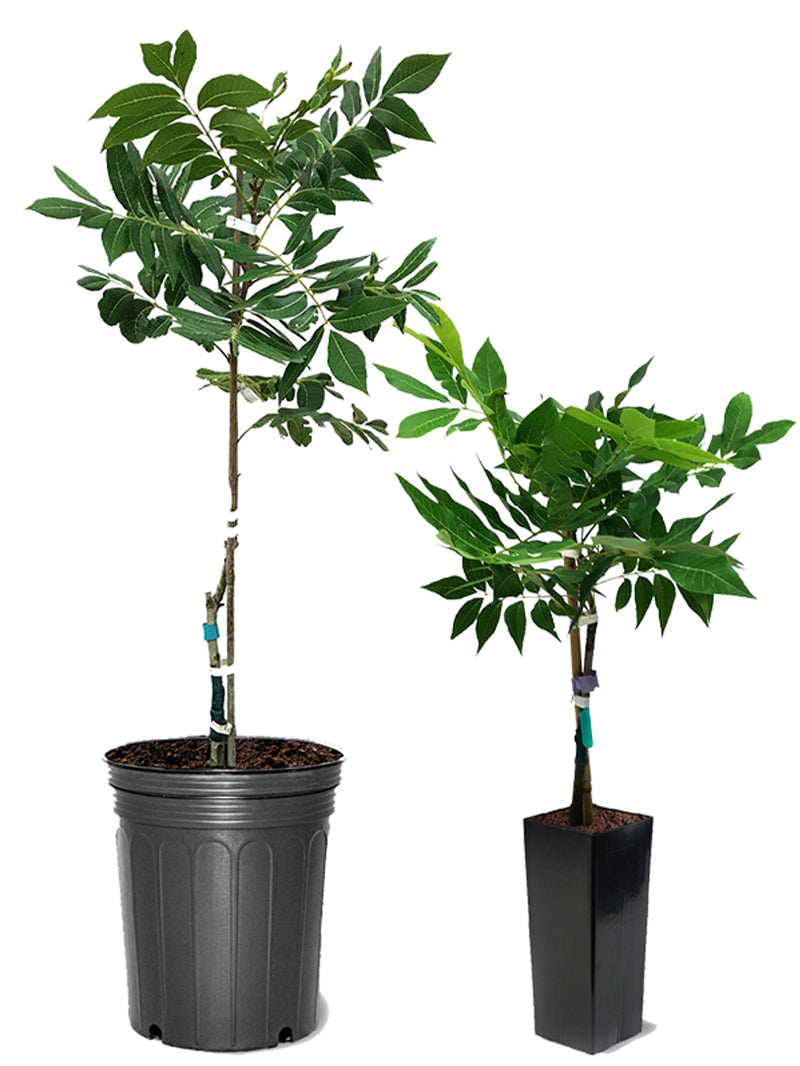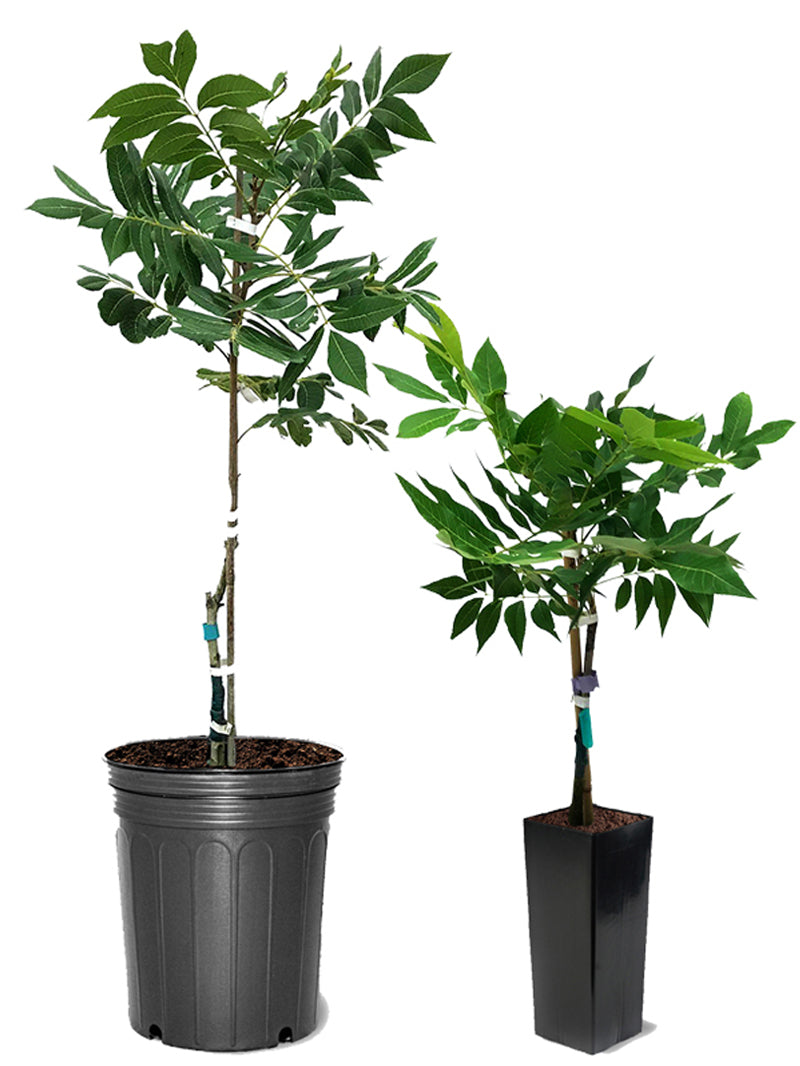Pecan- Type 1 Pollinators
Pecan trees are pollinated by wind. The pollen is blown from male flowers called catkins to female flowers called nutlets. On most varieties, the pollen is not dispersed (shed) at the same time that the nutlets become receptive. To overcome this problem, each pecan orchard should contain two flowering types:
• Type I, or protandrous, pecans are those in which the catkins appear first. Catkins are commonly called tassels because their golden strands hang in clumps throughout the tree.
• Type II, or protogynous, pecans are those in which the female nutlets become receptive before the catkins begin to shed pollen.
The ratio of the two types in an orchard need not be equal: Only 15 percent of the trees need to be pollinators for the main variety, as long as they are distributed uniformly throughout the planting. Small orchards may not need pollinators if native or seedling trees are within sight of the new planting; however, large commercial plantings should include pollinators within the orchard.

























